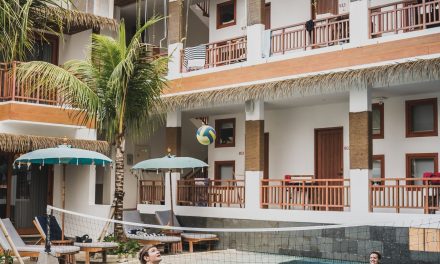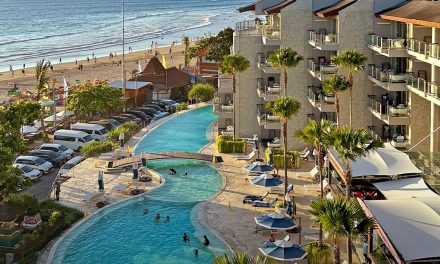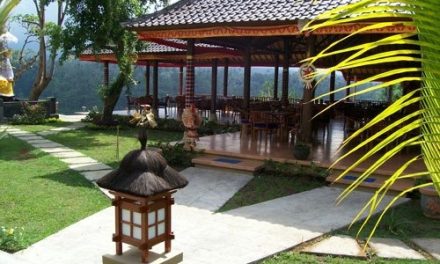When you think of Bali, what comes to mind? Sunny beaches, vibrant sunsets, perhaps a few delectable bites of Nasi Goreng? But let’s not forget the crown jewel beneath the waves: the mesmerizing coral reef ecosystems that are home to an astonishing array of marine life. Having perched atop these reefs during numerous snorkeling sessions, I can confidently say that the underwater worlds around Bali are nothing short of magical.
The Hidden Wonders Beneath the Surface
My first experience with Bali’s coral reefs was a day I’ll never forget. Armed with a snorkel, a mask, and a childlike sense of adventure, I hopped on a small boat headed toward the famous reefs of Amed. As we approached the site, I could see the water turning from a deep blue to a crystal-clear turquoise. With a gulp of excitement, I plunged into the water.
Just below the surface, a vibrant tapestry of life exploded before my eyes. Clownfish flitted among the anemones like little acrobats, sea turtles glided gracefully, and a kaleidoscope of corals whispered secrets of the ocean. It was as if I had entered a scene from a fantastical movie, a realm full of vibrant colors and bustling life.
Why Coral Reefs Matter
Coral reefs are often referred to as the rainforests of the sea. They provide essential habitats for marine species, support local fisheries, and protect coastlines from erosion. According to the Coral Triangle Initiative, over 3,000 species of fish call these reefs home, along with numerous invertebrates and marine plants. This biodiverse treasure is worth cherishing and protecting.
The importance of these ecosystems goes beyond biodiversity. They are critical for the livelihoods of many local communities that rely on fishing and tourism. However, during my travels, I saw firsthand the challenges these reefs face. On one dive in Tulamben, I noticed scars on the corals – remnants of the harsh realities of global warming and pollution. It made me more aware of our responsibilities as visitors and caretakers of this fragile beauty.
A Day in the Life of a Coral Reef
Imagine this: It’s mid-morning, the sun is beaming down, and you’re floating in the shallow waters off Menjangan Island. You’re surrounded by a bustling community of marine life. A parrotfish comes up to nibble on coral, its vibrant scales shimmering in the sunlight. Nearby, a moray eel peeks out cautiously, a reminder of the hidden wonders beneath the rocks.
But coral reefs aren’t just beautiful; they are dynamic ecosystems. The intricate relationship between corals and their environment is something I learned on my snorkeling adventures. For example, corals have a symbiotic relationship with algae called zooxanthellae. These tiny algae live within the coral’s tissues and provide food through photosynthesis while getting protection and carbon dioxide in return. This mutualistic relationship is essential for coral health and growth, and observing it up close was akin to witnessing an underwater partnership at work.
Conservation Begins with Us
Feeling inspired yet? You should be! But let’s talk about the looming threat to these underwater ecosystems. Climate change, overfishing, and pollution are major culprits contributing to coral reef degradation. It’s easy to feel overwhelmed, but there are simple actions we can take to make a difference.
1. Choose Sustainable Tourism: When visiting Bali, opt for eco-friendly diving and snorkeling tours. Many local operators practice sustainable methods that don’t harm the reefs. A few companies even conduct reef clean-ups and conservation projects. Join one of these activities!
2. Be a Responsible Diver/Snorkeler: Protect the reefs by avoiding touching them while you snorkel or dive. I made a mistake early on and grabbed onto a coral to stabilize myself. In hindsight, I felt terrible for potentially damaging it. Instead, practice buoyancy control and keep your distance.
3. Support Local Conservation Efforts: Donate to organizations focused on reef conservation or participate in local efforts. During my visit to the Reef Watch in Sanur, I learned about their initiatives and how they monitor coral health. These stories ignited a passion within me for marine conservation.
Unique Encounters
One of my most memorable encounters was when I stumbled upon a cleaning station – a magical spot where fish go to get cleaned by cleaner wrasses. As I observed this symbiotic relationship unfolding, I marveled at the harmony of nature. It felt like a personal invitation to witness life’s cycles – an unmissable experience that made me realize how interconnected marine life is.
Have you ever had a moment like that while traveling? Perhaps you were hiking in a forest and noticed how the smallest critters play vital roles in the ecosystem. I believe these moments of connection remind us we’re all a part of something bigger.
Conclusion: Your Adventure Awaits
Bali’s coral reef ecosystems are vibrant, diverse, and irreplaceable treasures. As you plan your next adventure, consider diving into the waters of Bali—not just to witness the beauty but to appreciate the importance of conservation. Share your experiences and learn from each encounter. Whether you’re swimming with a school of fish or watching a hawksbill turtle lazily glide by, remember that every small action contributes to a larger cause. The coral reefs of Bali are waiting to show you their wonders—but they need our help to thrive. So, gear up, dive in, and let the magic of Bali’s marine life captivate you!






